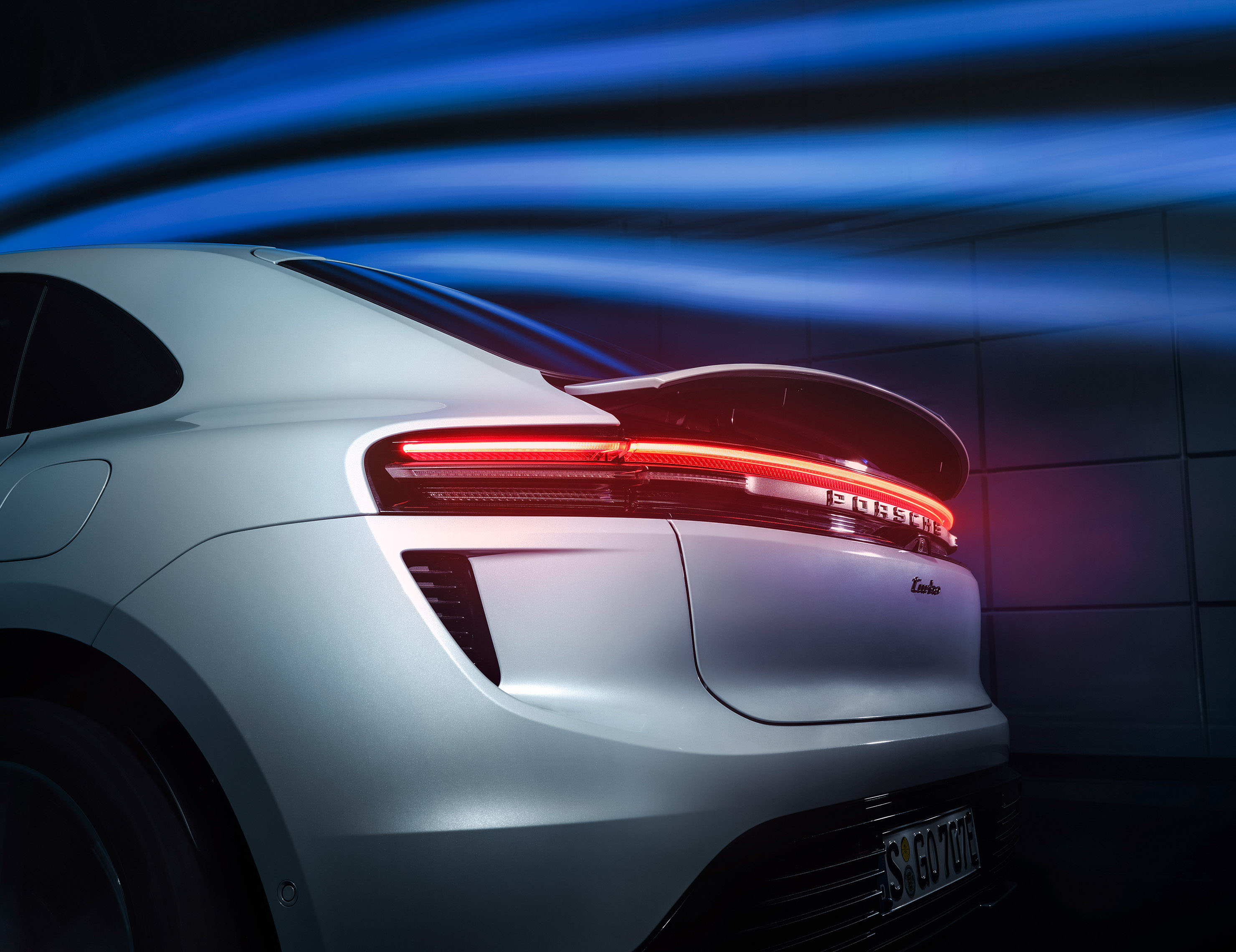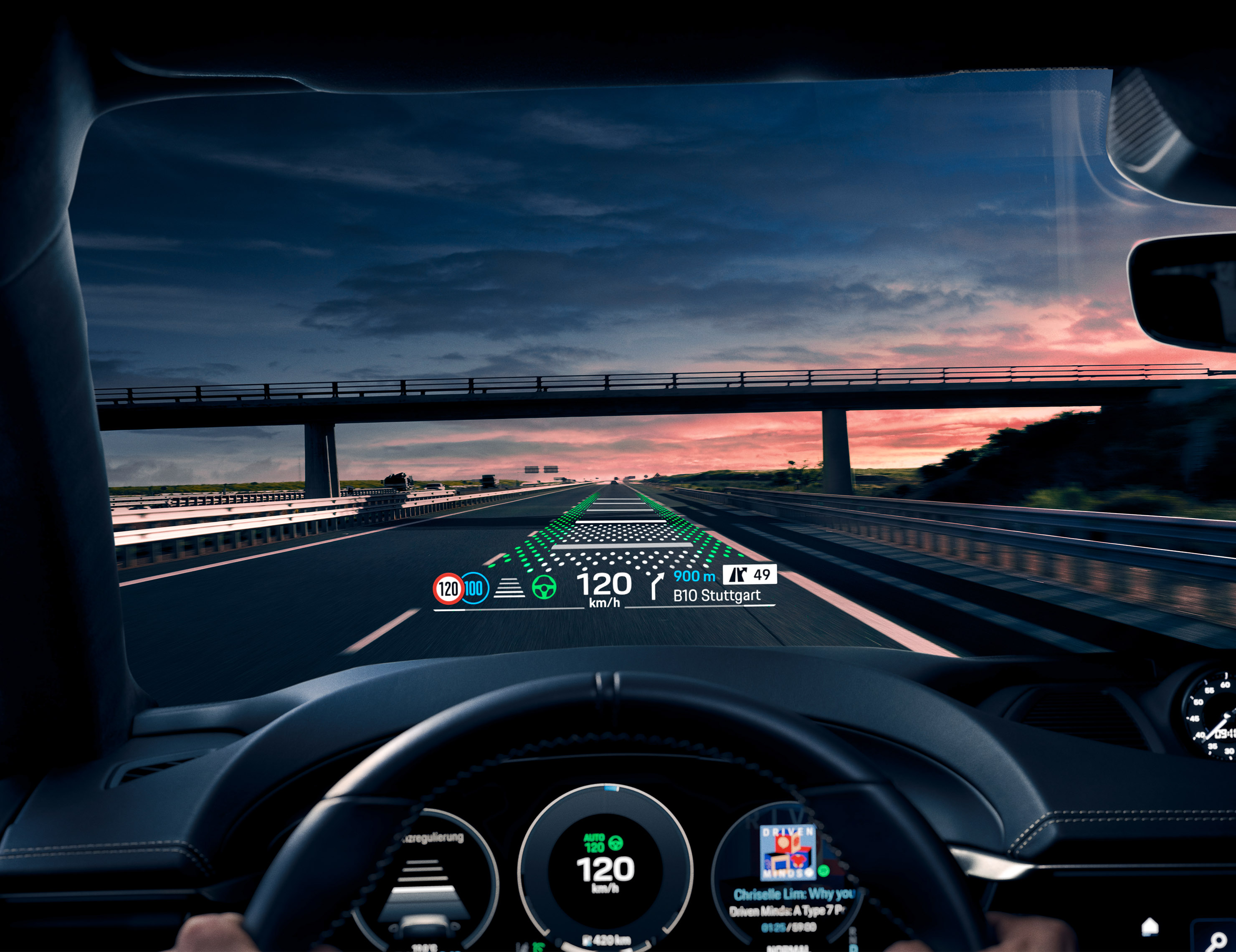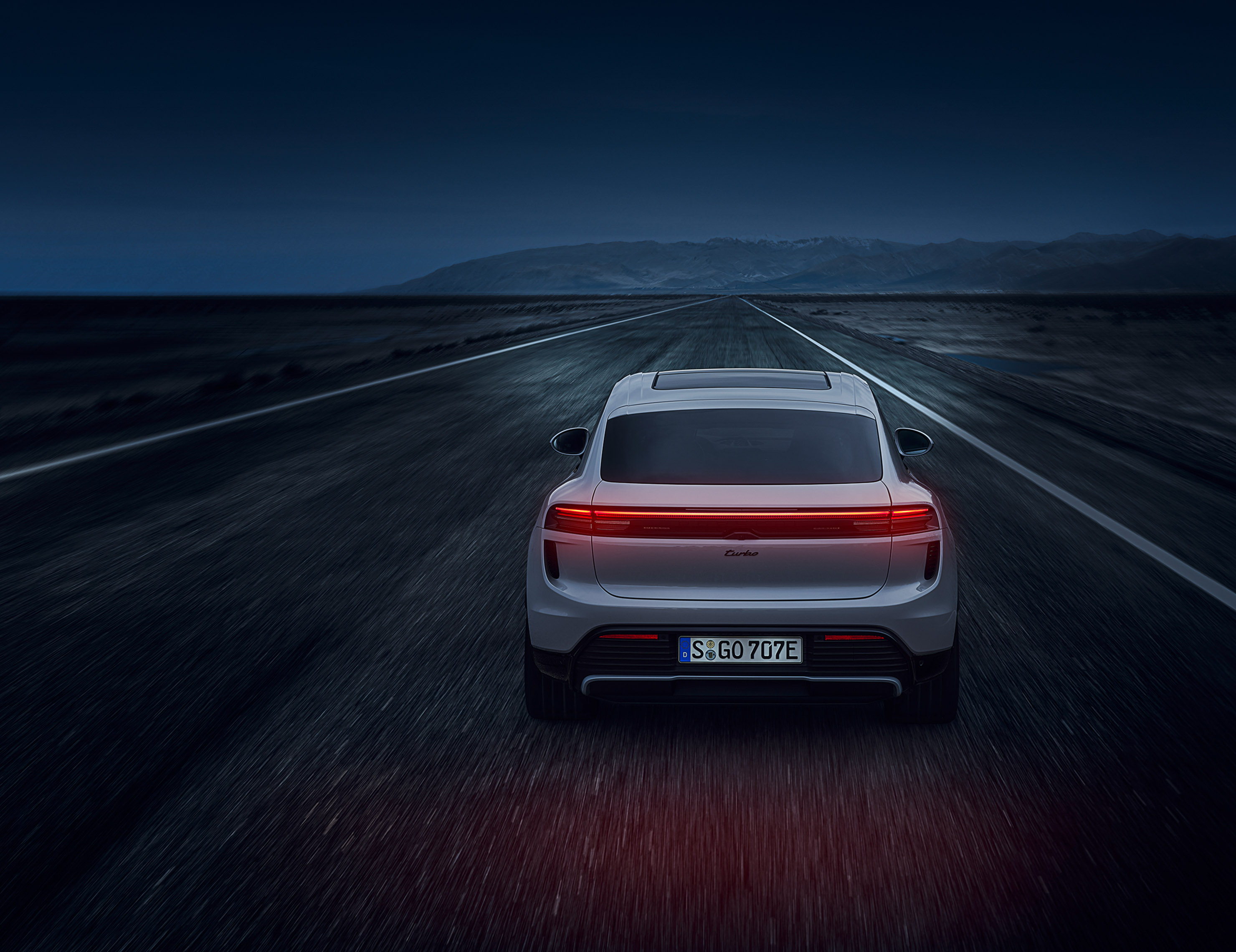It’s all down to this line, a mere stroke on paper. And yet it marks a a new beginning. The coupé-like roofline of the Macan and the striking rear—with its shape so typical of Porsche—evoke the tight, unmistakable flyline of the 911. But this time, it’s not just a reminder of the Porsche icon. Rather, the shape, including the rear spoiler, is a groundbreaking innovation in the all-electric SUV segment. “The active aerodynamic elements all contribute significantly to the range,” says aerodynamics specialist Thomas Wiegand. “We have a rear spoiler that raises automatically, active cooling flaps at the front air intakes, and flexible covers on the underbody.” Located in the same building as the Style Porsche design department, the Weissach wind tunnel gives form and shape to the streamlining of the newly developed Macan. It’s the first Porsche based on the Premium Platform Electric (PPE) created in collaboration with Audi. This platform not only benefits from development synergies, but is also highly flexible, enabling Porsche to implement its own technical and brand-specific objectives. Full electrification of the popular model line is an important milestone on the path to ensuring that more than 80 percent of the new cars are fully electrified in 2030—depending on the demand of customers and the development of electromobility in the respective regions of the world.
In practice, ten percent less drag means an increase in range of 21 kilometers. Thomas Wiegand, Head of Aerodynamics and Aeroacoustics—Development, Weissach
“What you’ll notice at the front is the central air intake,” says Wiegand. “We designed the cooling flaps to be fully variable and to regulate temperature. Fully opened, they cool the battery during the charging process, which protects the battery and extends its service life. On the road, they close to reduce drag, which increases the range. But the variable flaps open again when the car’s temperature sensors call for cool air. In this way, we can ensure optimal cooling for the battery and engines, air conditioning in the interior, and braking performance in all driving situations.”
Because drag has a direct impact on range—ten percent less of the former means an increase in the latter of 21 kilometers—the underbody, too, features variable elements. Like that of a race car, the underbelly is flat and closed, even in the area surrounding the rear wheels. But the panels there are flexible and minimize drag even in rebound, an ingenious solution that complements the streamlined, largely closed wheel rims and the first-ever aerodynamically optimized Porsche tire contours. When cruising country roads, the Macan automatically assumes its ideal aerodynamic set-up. The rear spoiler adopts the Eco position, the air flaps close, and the chassis lowers. Wiegand and his team identified a drag coefficient of 0.25 for this situation—the best that a Porsche SUV has ever achieved.

Get behind the wheel and feel “Porsche”. The unmistakable topology of the cockpit places a clear focus on the driver. As in the original 911, the instrument cluster reigns supreme in the Macan, and is now fully digital. “We’ve combined the best of two worlds,” says Miriam Mohamad. “The seamless transition between the smartphone ecosystem and the car is important to us.” And that’s why the 12.6-inch curved instrument cluster not only displays the familiar views, but now also features an Apple CarPlay map for the first time.
We’ve added new content to the cockpit, from tried-and-tested digital ecosystems, while maintaining its Porsche identity. Miriam Mohamad, Project Manager for Infotainment and Connect, Macan Model Line, Hemmingen
Yet another software highlight is the new Android operating system. “We’ve further developed the Porsche identity with its tried-and-tested operating elements and added customer-relevant content such as music and video streaming and gaming apps,” says Mohamad. Anyone who uses popular apps such as Spotify and YouTube will now have access to their personal profile, including playlists and recommendations—just like on their smartphone. The front passenger also has their own screen for streaming their favorite series without distracting the driver, and has the option to take over navigation and commands with voice command. Incidentally, the first to speak is in command. Array microphone technology can match commands to the specific seat, thereby avoiding confusion. And with six additional new languages, the system is now multilingual like never before. The augmented reality head-up display is an additional innovation at Porsche and appears as a virtual image 87 inches in size at a distance of ten meters in front of the driver. Virtual objects are projected onto the actual surroundings with precise localization for faster and simpler comprehension of information about navigation and driver assistance systems. When you’re turning, for example, virtual navigation arrows hover at intersection height and show the way. Warnings, too, are projected onto the actual obstacle to prevent misunderstanding.

Featuring 56 LEDs that extend from one door to another and across the instrument panel, the standard, innovative communication light not only fulfills three tasks in the interior—providing information, issuing warnings, and creating atmosphere—but also more effectively highlights characteristic Porsche features such as launch control and changing driving modes. In addition, the communication light visualizes different vehicle situations such as charging and operates in conjunction with driver assistance systems. For example, red pulsating on the door warns of an approaching road user from behind before the passenger can open the door.
The Integrated Power Box is like a tiny house for important energy components. We have applied for a patent for the compact box. Tomas Gajdos, Project Manager for Premium Platform Electric (PPE), Macan Model Line, Hemmingen
The requirements for the developers of the drive and energy systems were immense. They included outstanding performance, low weight, and new ideas for charging convenience, resulting in a system in which each axle of the new Macan is powered by its own permanent synchronous electric motor. Featuring an adaptation of the well-known 800-volt architecture of the Taycan, the Turbo variant boasts overboost power of up to 470 kW (639 PS). A lithium-ion battery is positioned in the underbody and features a brand-new cell design and a total capacity of 152 ampere hours with gross energy content of 100 kilowatt hours. The new battery allows you to increase the state of charge from 10 to 80 percent in about 21 minutes. In terms of range, that means about four minutes for 100 kilometers.
Energy is automatically fed back into the battery whenever the brakes are applied, with kinetic energy converted into as much as 240 kW of regenerative energy depending on braking intensity. Once the accelerator is released, the Porsche’s typical “gliding” activates automatically—the drive switches off and the car coasts along without using any energy.
Good things often come in small packages. “We’ve developed new ultra-lightweight, streamlined solutions,” says project engineer Tomas Gajdos. “At the same time, we’ve managed to improve safety features and make the charging process more efficient.” Porsche’s Integrated Power Box (IPB), for which it registered a patent, is much like a tiny house—a shining example of a compact design. The IPB combines multiple key energy components, including the AC charger, the DC-to-DC converter, and a battery heater. The latter automatically ensures robust charging performance on winter days and independently maintains the appropriate battery temperature for planned routes with charging stops.
No Porsche without extraordinary driving dynamics! That’s where we focus all of our passion. The Macan is clearly the sports car in its segment. Maurice van de Weerd, Manager of Driving Dynamics for SUVs/Sedans, Weissach
The Macan offers a whole new level of flexibility when it comes to choosing charging stations. “Bank charging is a fundamental innovation that’s suitable for everyday use,” explains Gajdos. “Because many charging stations still operate with 400-volt technology, we’ve optimized how they’re used.” At stations that operate with 400-volt direct current, the battery is divided into two halves thanks to the high-voltage separation elements installed. An 800-volt battery therefore consists of two 400-volt batteries that operate in parallel. If necessary, the two halves can first be equalized in their state of charge and then charged together. The Macan therefore doesn’t need a high-voltage booster, which in turn reduces weight and frees up space.
Range-optimized aerodynamics, milestones in the operating concept, and innovations in the drive and battery technology: everything ultimately needs to result in driving fun. “Otherwise the Macan wouldn’t be a Porsche,” says Maurice van de Weerd who, as Manager of Driving Dynamics, is responsible for the SUV series and the Panamera. His team has tamed the extraordinary peak torque of 1,130 newton meters, with a key focus on performance at the car’s rear with rear-axle steering.

“Our aims were to maximize driving stability and traction and ensure unrivaled agility and comfort,” explains van de Weerd. He talks about precise all-wheel drive control, the weight balance with a slight emphasis at the rear, and the distinct mixed tires. He even mentions the controlled two-valve shock absorbers. “They ensure comfort and make the combination of driving mode and level control much more noticeable.” The developers also provided the range-topping version with an electronically controlled limited-slip differential as standard.
In other words, there is no finish line. Porsche is following a straight line to the future of allelectric mobility—without compromise.
